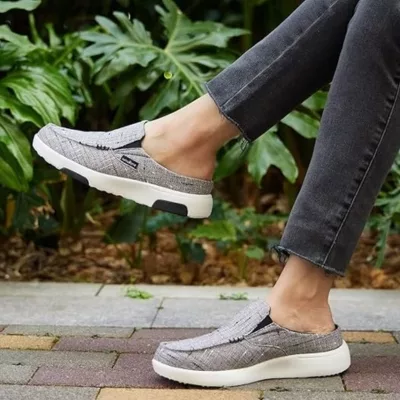Waterproof fabric should be a staple in everyone’s wardrobe. From repelling water to ensuring that the wearer remains dry and comfortable even in the face of inclement weather conditions, these clothes are a must need, especially in unpredictable weather conditions.
Unlike water-resistant fabrics, which may only offer limited protection, fabrics that are waterproof boast a higher level of impermeability, which makes them a better option for outdoor enthusiasts, urban commuters, and anyone seeking reliable protection from unpredictable weather conditions.
But the manufacturing process and lifecycle of waterproof fabrics made up of cheap and non-biodegradable plastic takes a toll on nature.
In a world where people are increasingly aware of the environmental impact of our choices, it’s crucial to make choices that reflect our commitment to sustainability. Even when it’s something as common as raincoat and windcheaters.
In this article, we’ll give you the ultimate guide to eco-friendly fabrics that is waterproof, and how you can care for it during off-season.
Ready? Let’s get started.
The Origins of Waterproof Fabrics
The need for waterproof fabrics isn’t new. Early civilizations used natural substances like oils, waxes, and rubber on cloth to create water-resistant materials. One of the first significant advancements happened in the 19th century, when Scottish inventor Charles Macintosh discovered that rubber could be dissolved in naphtha to create a waterproof paste, which was then sandwiched between two layers of fabric to produce a waterproof material.
Over the years, the technology and materials used in waterproof fabrics have continued to evolve, and materials now provide even better protection, durability, and comfort. But, there’s a problem.
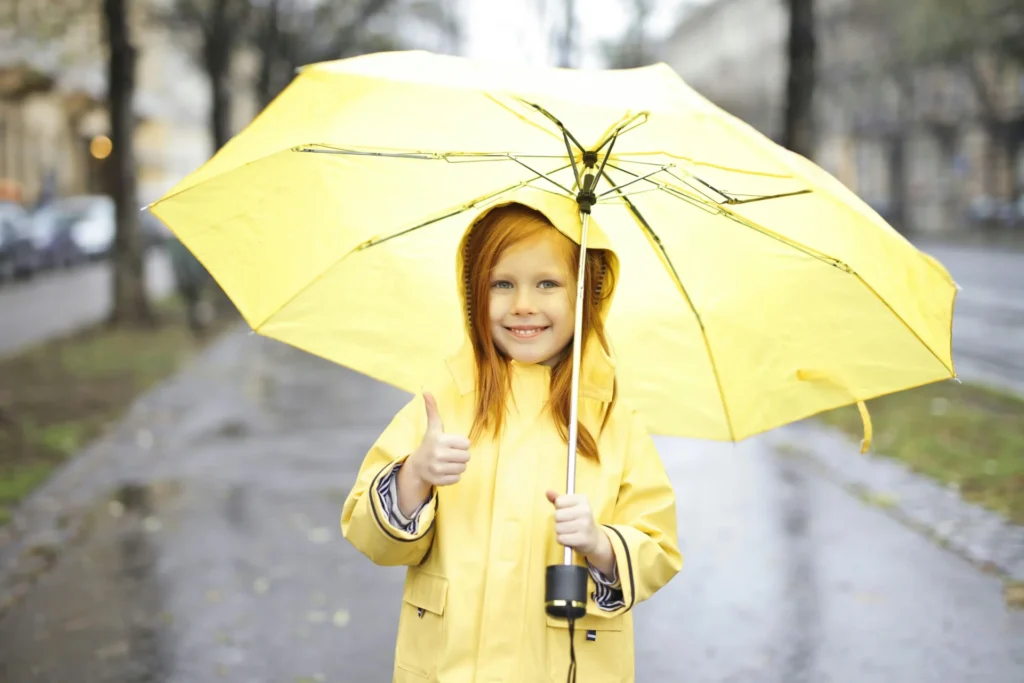
Also Read: Is Temu Ethical?
The Problem with Conventional Waterproof Materials
Perfluorinated Compounds (PFCs), used in many conventional waterproofing processes, pose serious environmental and health risks. These chemicals do not break down, and keep accumulating in landfills across the world.
Moreover, the lifecycle of synthetic waterproof materials—from production to disposal—leaves a substantial ecological footprint, which has prompted the need for sustainable alternatives.
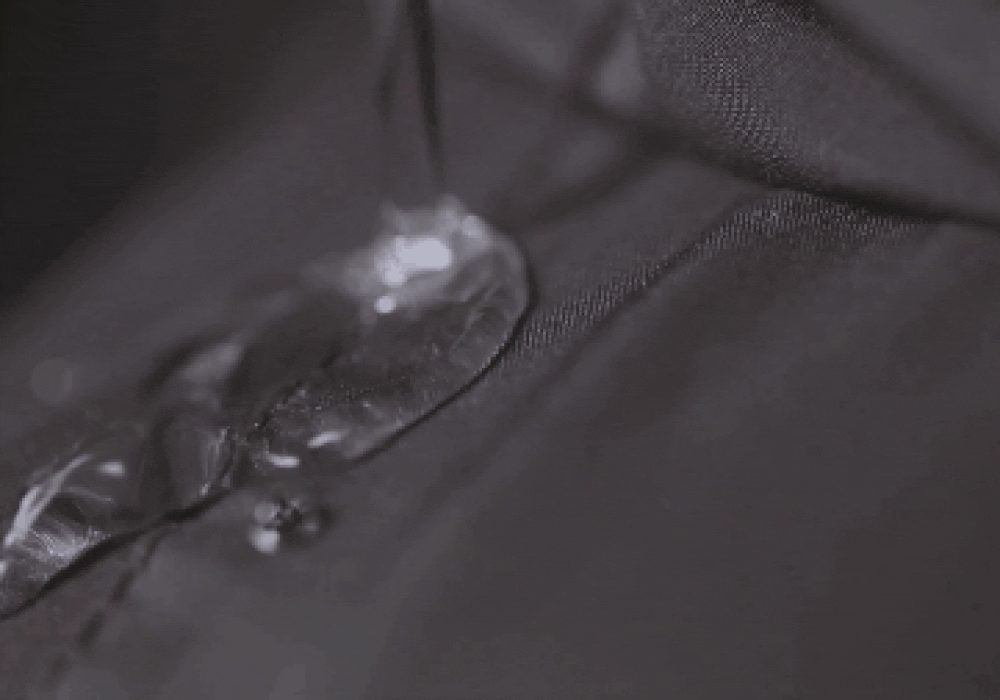
Eco-Friendly Waterproof Fabrics
Scientists around the world have been working on eco-friendly waterproof fabrics that leverage sustainable materials and processes to minimize environmental impact while providing effective protection against moisture. The shift towards eco-friendly waterproof fabrics offers hope. Innovations include:
Organic Cotton with Water-Resistant Coatings
Organic cotton, cultivated without the use of synthetic pesticides and fertilizers, in combination with eco-friendly water-resistant coatings, can create a material that repels water while remaining gentle on the planet.
This combination provides the tactile comfort and breathability of cotton and introduces a durable, water-resistant functionality that meets the demands of both outdoor enthusiasts and daily wear.
Recycled Polyester and Nylon
Polyester and nylon are repurposed to reduce the procurement of virgin fibres. Materials like discarded plastic bottles, fishing nets, and other plastic goods can be transformed into high-quality fibers that rival the performance and durability of their non-recycled counterparts.
This innovative recycling journey not only diverts plastics from waste streams but also reduces the overall carbon footprint associated with fabric production.
Also Read: How to Get Acrylic Paint Out of Clothes
Biodegradable Materials
Materials like Tencel, derived from the cellulose of trees, and waxed canvas, treated with natural waxes, stand out for their environmental credentials. These materials are durable and make them ideal for a wide range of applications.
More importantly, at the end of their lifecycle, these fabrics are biodegradable, therefore they assimilate back into the earth without leaving a trace of pollution.
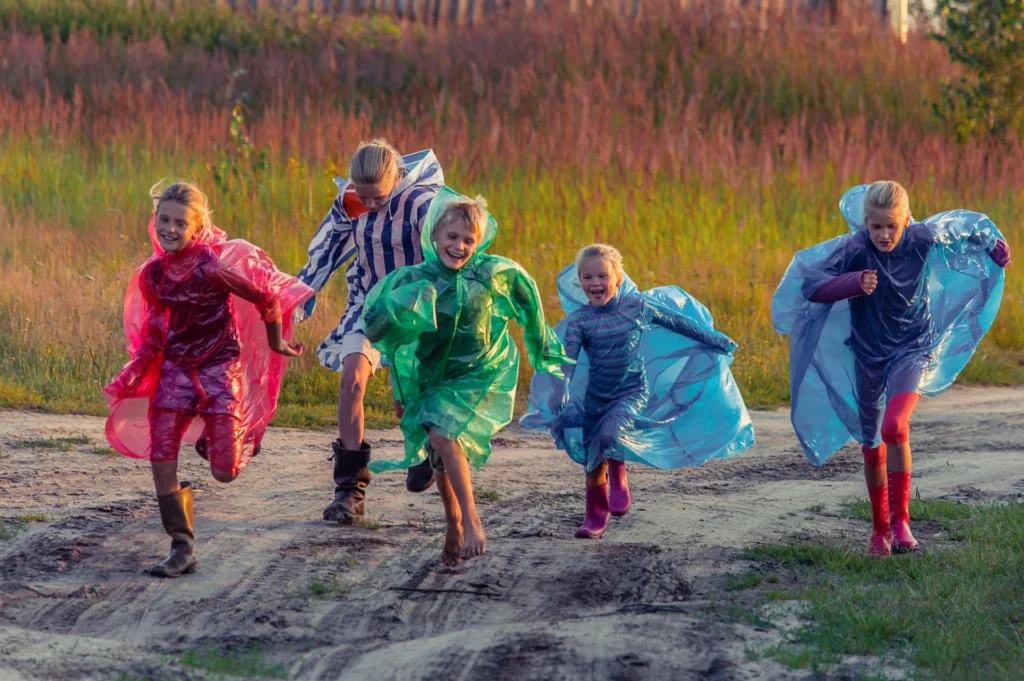
Also Read: Clean People Laundry Sheets Full Review
Why You Should Choose Sustainable Waterproof Fabric
Making a smart decision regarding your waterproof fabric reduces your carbon footprint, and the environmental pollution that comes with every ounce of plastic you buy. But that’s not all. Every time you choose an alternative to plastic, you prolong and health and wellness of yourself and your family.
Here are all the benefits of choosing a sustainable waterproof fabric:
1. Health and Safety: Eco-friendly waterproof fabrics are made without the use of harmful chemicals that can be found in conventional fabrics. This means safer conditions for both the workers involved in their production and the end-users who use these materials.
2. Energy Efficiency: The production of sustainable fabrics aims to minimize energy consumption compared to traditional methods. They aren’t mass produced, and are often made on demand, which reduces waste and carbon footprints.
3. Biodegradability: Some eco-friendly waterproof materials can break down naturally at the end of their lifecycle and not contribute to landfill waste, which reduces their environmental impact to a significant degree.
4. Innovation and Development: Sustainable waterproofing solutions drives innovation in fabric technology, leading to new and improved materials that offer better performance and lower environmental impact.
5. Versatility: Eco-friendly waterproof fabrics are increasingly versatile, and have applications across various industries including outdoor gear, fashion, automotive, and home furnishings.
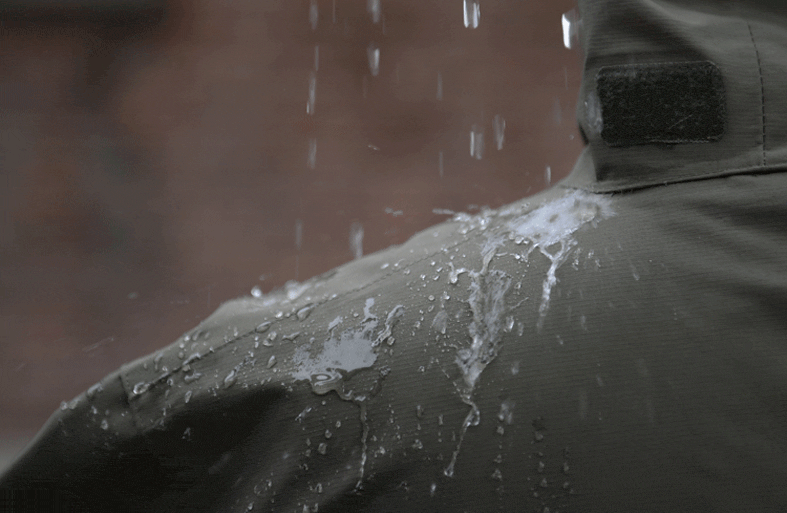
How To Choose The Right Waterproof Fabric
It’s crucial to invest in quality materials to avoid the disappointment and inconvenience of cheaper options that fail to perform, and leave you unprotected in the streets. When selecting waterproof fabrics, here are some things you must keep in mind:
1. Durability: Sustainable waterproof fabrics are designed to last longer thanks to the use of high-quality, resilient materials that can withstand harsh weather conditions, wear and tear from outdoor activities, or regular washing. By prioritizing durability, you’re investing in products that serve you longer, offering better value for money and a lower environmental footprint over time.
Also Read: PlushBeds Hybrid Latex Mattress Review
2. Breathability: The comfort of waterproof fabrics is largely determined by their ability to allow moisture vapor to pass through the material, preventing the buildup of sweat and condensation. Eco-friendly waterproof materials often incorporate innovative technologies that enhance breathability, ensuring you stay dry from external water and internal perspiration.
3. Environmental Impact: Sustainable waterproofing solutions use recycled or renewable materials, employ cleaner production processes, and enhance the recyclability or biodegradability of the final products. By choosing fabrics with a lower environmental impact, consumers can support the health of the planet, reduce their carbon footprint, and contribute to the preservation of natural resources.
4. Certifications: Global Organic Textile Standard (GOTS) and bluesign® are reliable indicators of sustainability. The GOTS certification ensures fabrics meet stringent environmental and social criteria throughout their production, from raw material extraction to the final product, while bluesign® focuses on sustainable manufacturing processes, guaranteeing that no harmful substances were used.
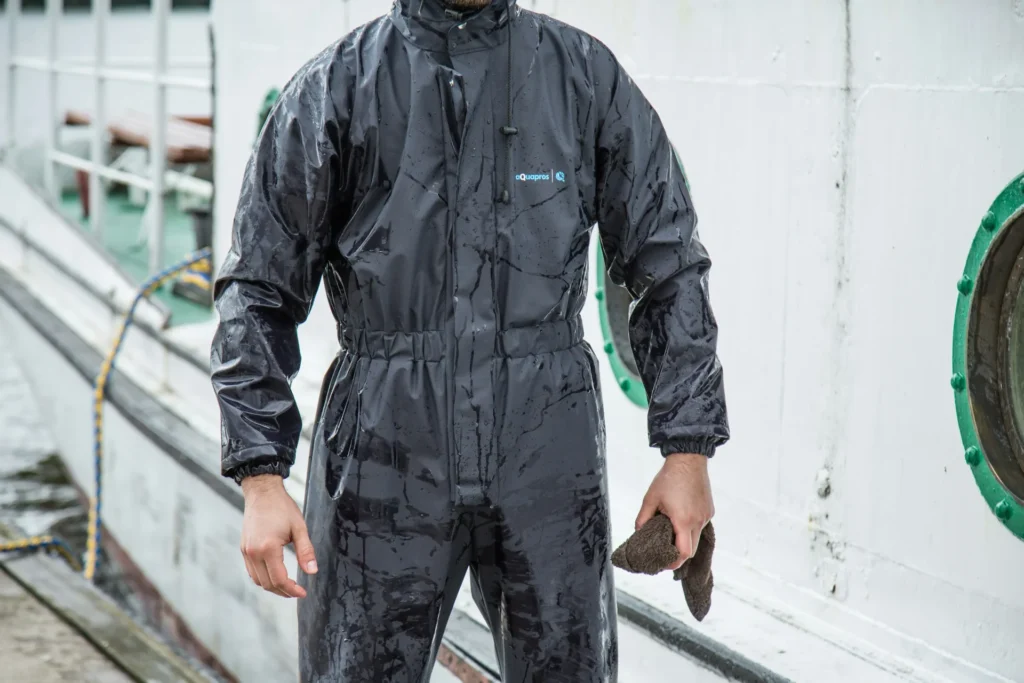
How to Take Care of Waterproof Fabrics?
Proper care extends the life of waterproof clothing items. Here are some instructions that you need to follow while caring for waterproof fabrics in your wardrobe:
Cleaning
- Wash your gear regularly to help maintain its waterproof properties.
- Use a mild detergent or one specifically designed for waterproof fabrics, and avoid fabric softeners, bleach, or harsh chemicals that will damage the waterproof membrane.
- Wash waterproof garments in cold or lukewarm water on a gentle cycle as hot water can damage the fabric.
- Make sure to rinse the items thoroughly to fully remove the detergent.
Drying
- Let your garments air dry in a well-ventilated area.
- If the care label allows, you can tumble dry on a low heat setting.
Re-Waterproofing
- Check your gear periodically for signs of wear and tear.
- Apply a waterproofing spray if your fabric starts absorbing water instead of repelling it.

Storage
- Ensure your gear is completely dry before storing to prevent mold and mildew growth.
- Store items loosely to avoid compressing the fabric, which can damage the waterproof membrane.
Repair & Care
- Use a repair tape or patch kit designed for waterproof fabrics to repair any holes or tears and maintain the garment’s waterproof integrity.
- Check care labels for specific instructions from the manufacturer, which may vary based on different fabrics.
Buy Waterproof Fabrics Online
Ready to mix up your wardrobe with some eco-forward solutions? Here’s a list of top-rated brands for you!

The DEVOPS Heat Chain Compression Baselayer Turtleneck is a great choice for cold weather activities. It offers excellent thermal insulation and moisture-wicking properties, keeping you warm and dry. The compression fit enhances blood circulation and reduces muscle fatigue, making it ideal for athletes. The fabric is soft, stretchy, and comfortable, providing a snug yet non-restrictive fit. Overall, it’s a reliable and high-performance baselayer for outdoor enthusiasts.

The Women’s Waterproof Fleece-Lined Softshell Pants are excellent for outdoor activities in cold, wet conditions. These pants offer superior waterproofing, wind resistance, and warmth with their fleece lining. The breathable fabric ensures comfort during physical activities, while the elastic waistband provides a snug fit. Perfect for hiking, training, or hunting, these versatile pants deliver exceptional performance and comfort in harsh weather.

The Columbia Women’s Storm Surge Waterproof Pants are a perfect addition to any outdoor wardrobe. These pants feature Omni-Tech waterproof and breathable technology, ensuring you stay dry in wet conditions. The adjustable waistband and comfortable fit make them ideal for hiking or other outdoor activities. Lightweight and packable, they are easy to carry on any adventure. Highly recommended for anyone needing reliable rain protection.
Conclusion
We love it when the ways to prolong the health of our family coincides with ways to protect our planet. As individuals, our journey towards reducing our carbon footprint begins with awareness and is sustained by the choices we make daily. By opting for eco-friendly waterproof fabrics, we take a step towards a more sustainable lifestyle and encourage industries to continue innovating for the planet’s health.
Interested in further reducing your environmental impact and ways to minimize your carbon footprint through your wardrobe? Check out our guide on sustainable fabrics.
FAQs
What are the differences between waterproof and water-resistant fabrics?
Waterproof fabrics provide impenetrable protection against moisture, while water-resistant materials can withstand light rain and snow, but don’t work under not prolonged exposure.
What environmental impact do traditional waterproofing methods have?
Traditional methods often rely on chemicals like Perfluorinated Compounds which is a toxic compounds that poses significant risk to the environment. The lifecycle of synthetic materials also contributes to waste, non-biodegradable and end up in a landfill.
What are some examples of eco-friendly waterproof fabrics?
Eco-friendly waterproof fabrics include materials like organic cotton treated with water-resistant finishes that avoid harmful chemicals, recycled polyester and nylon which repurpose plastic waste into high-quality fibers, and biodegradable options such as waxed canvas.
How are eco-friendly waterproof fabrics made?
An eco-friendly waterproof fabric is made with minimal environmental impact, and by using recycled materials, organic fibers, and biodegradable components. Common examples include organic cotton with natural coatings, recycled polyester, recycled nylon, waxed canvas, and environmentally friendly PU laminates.







